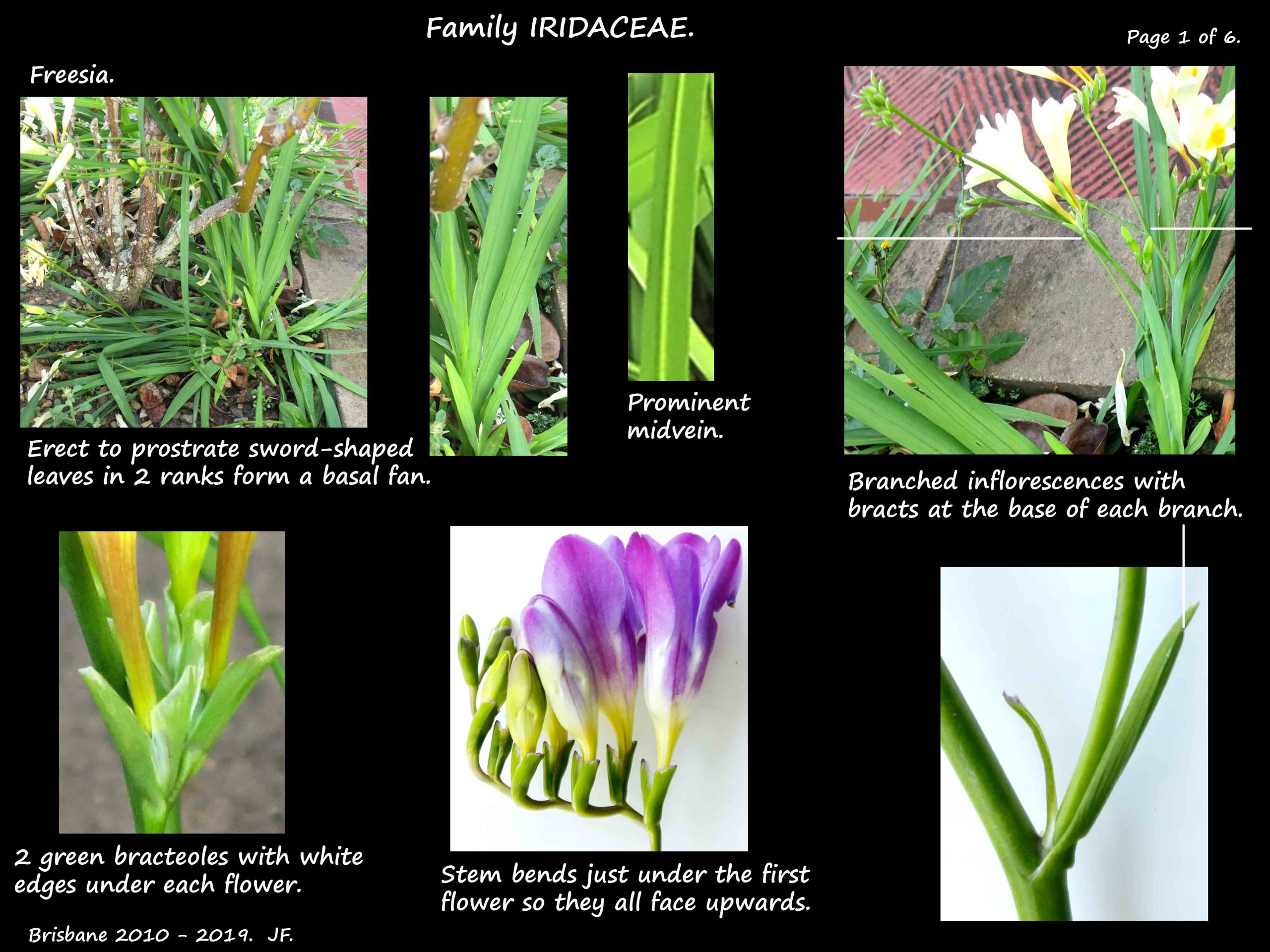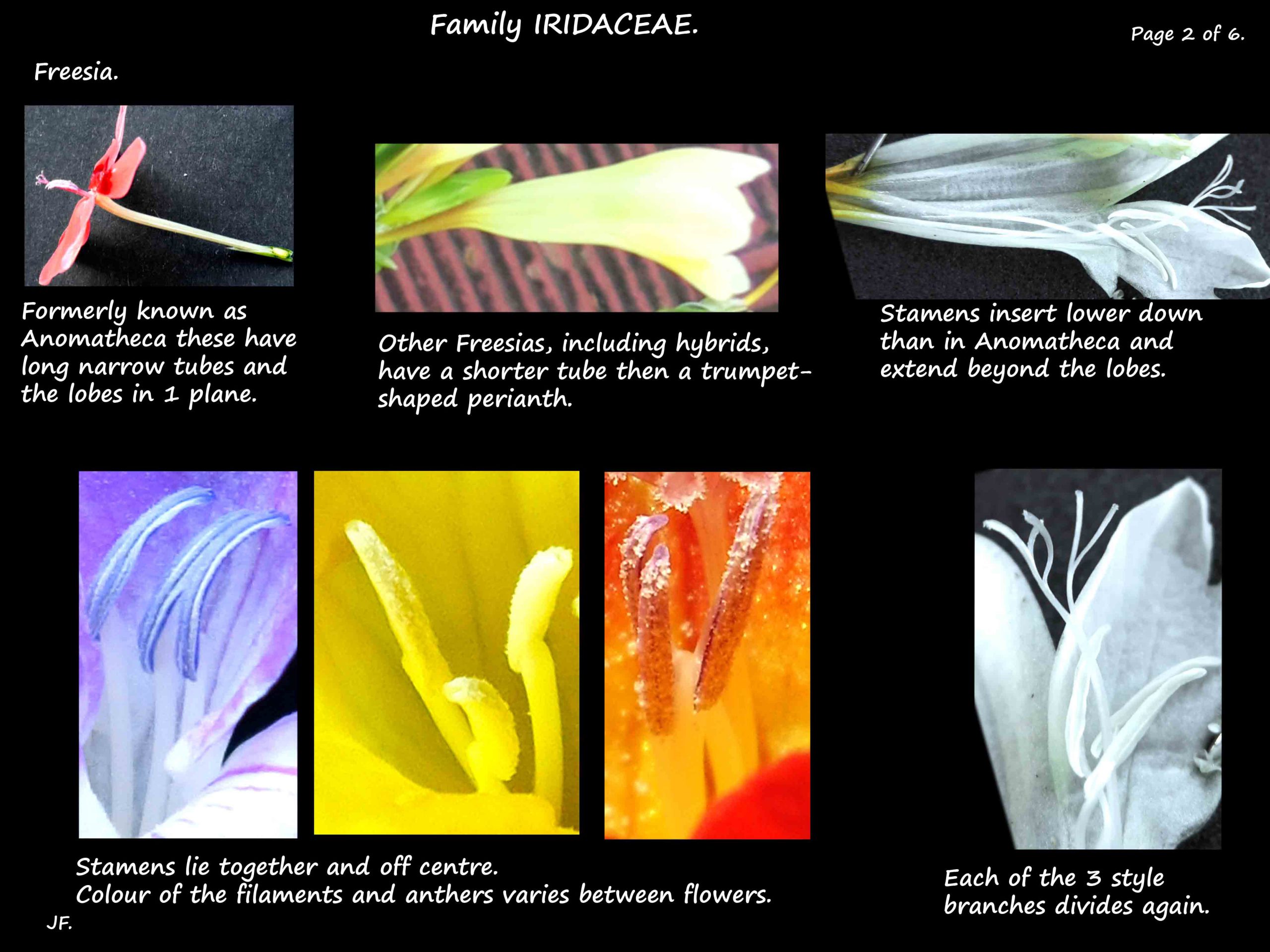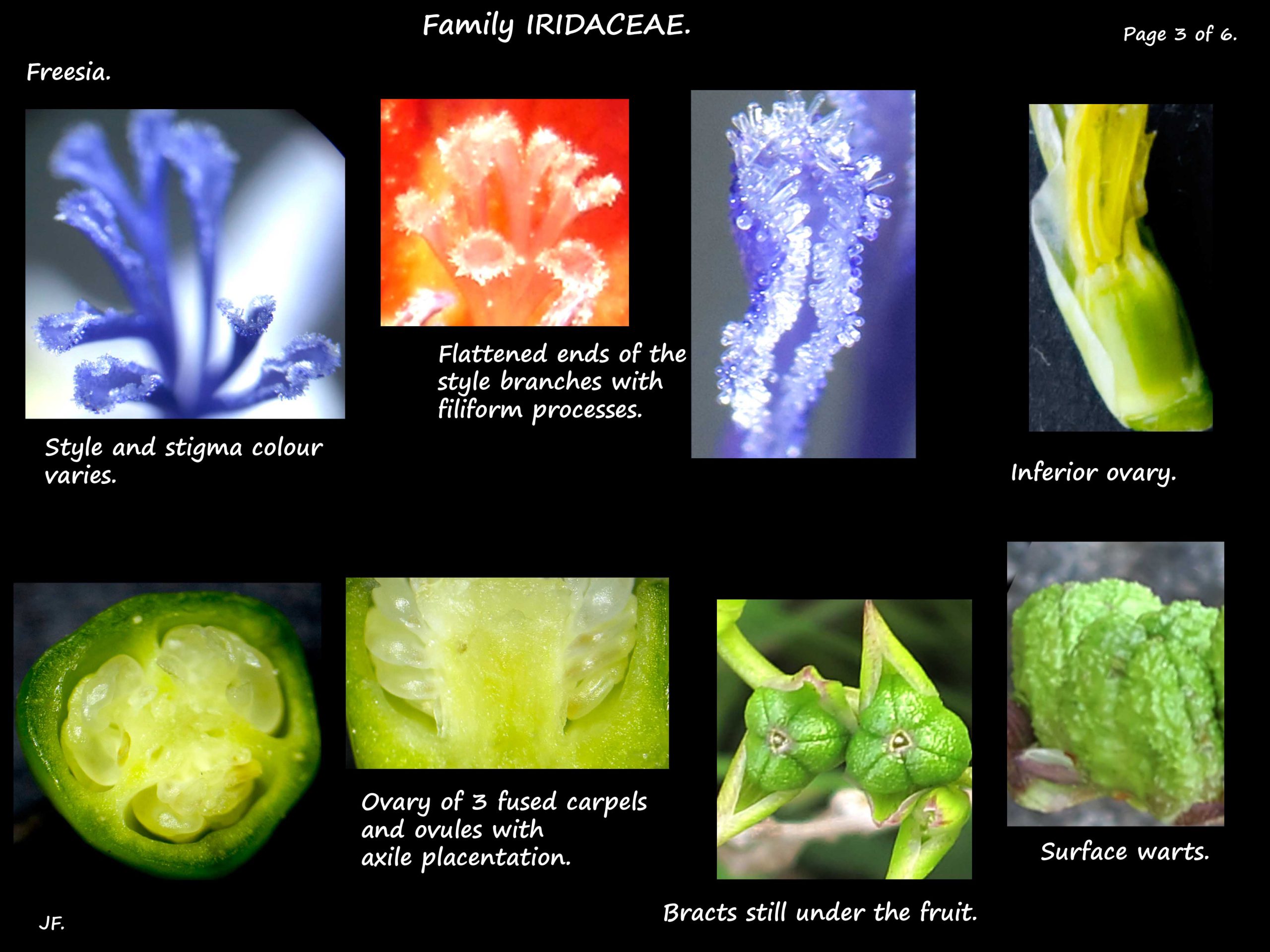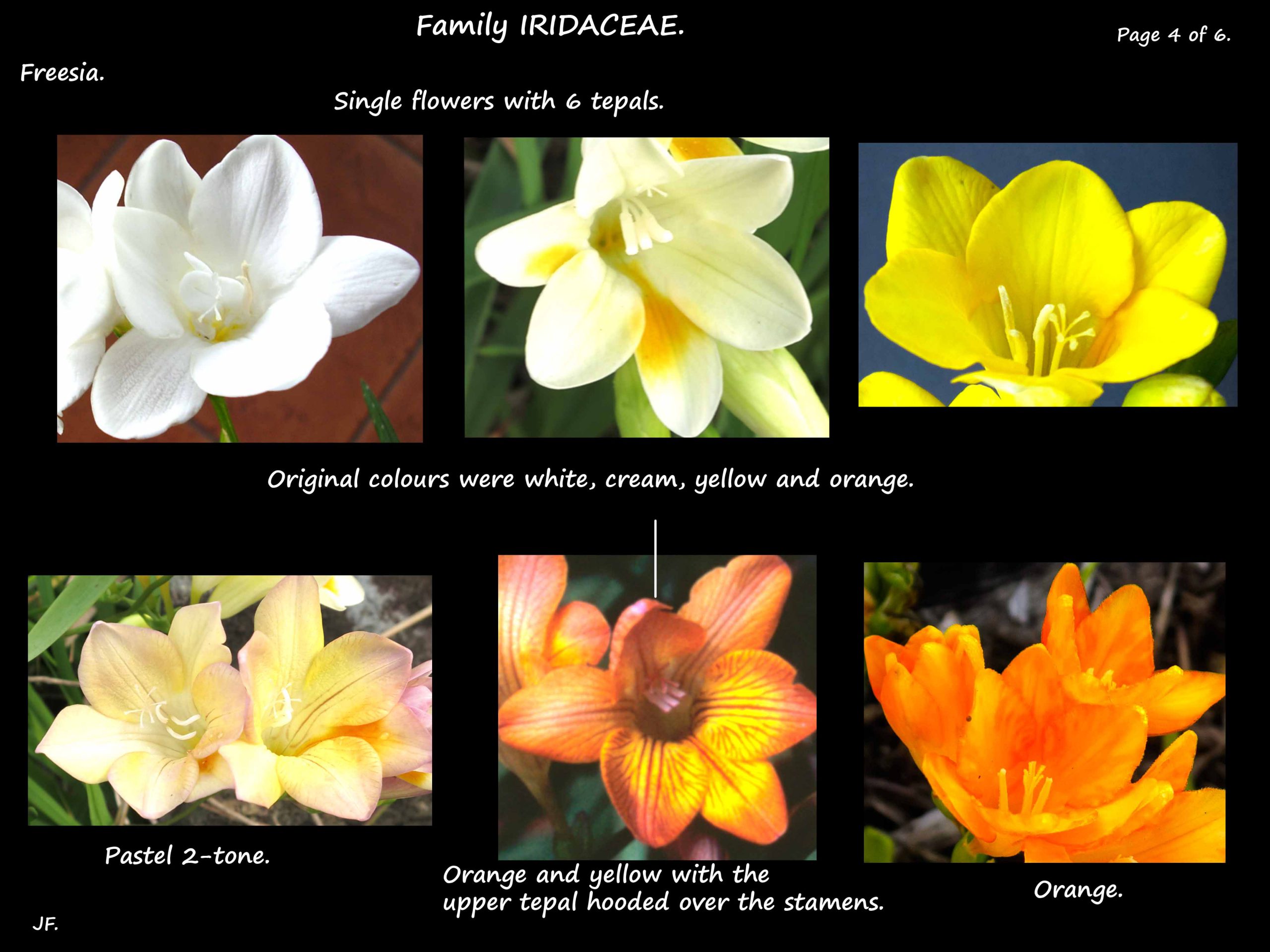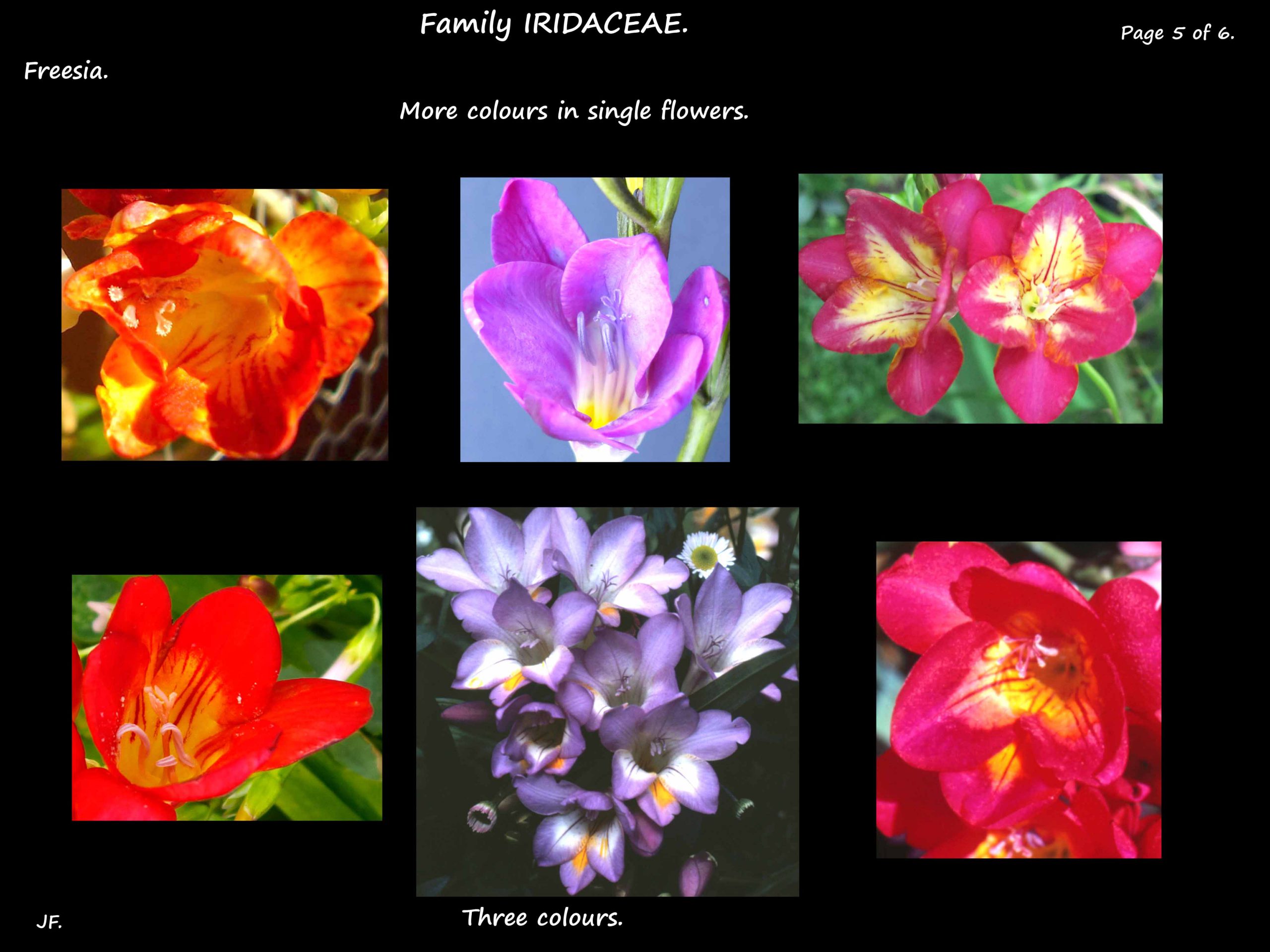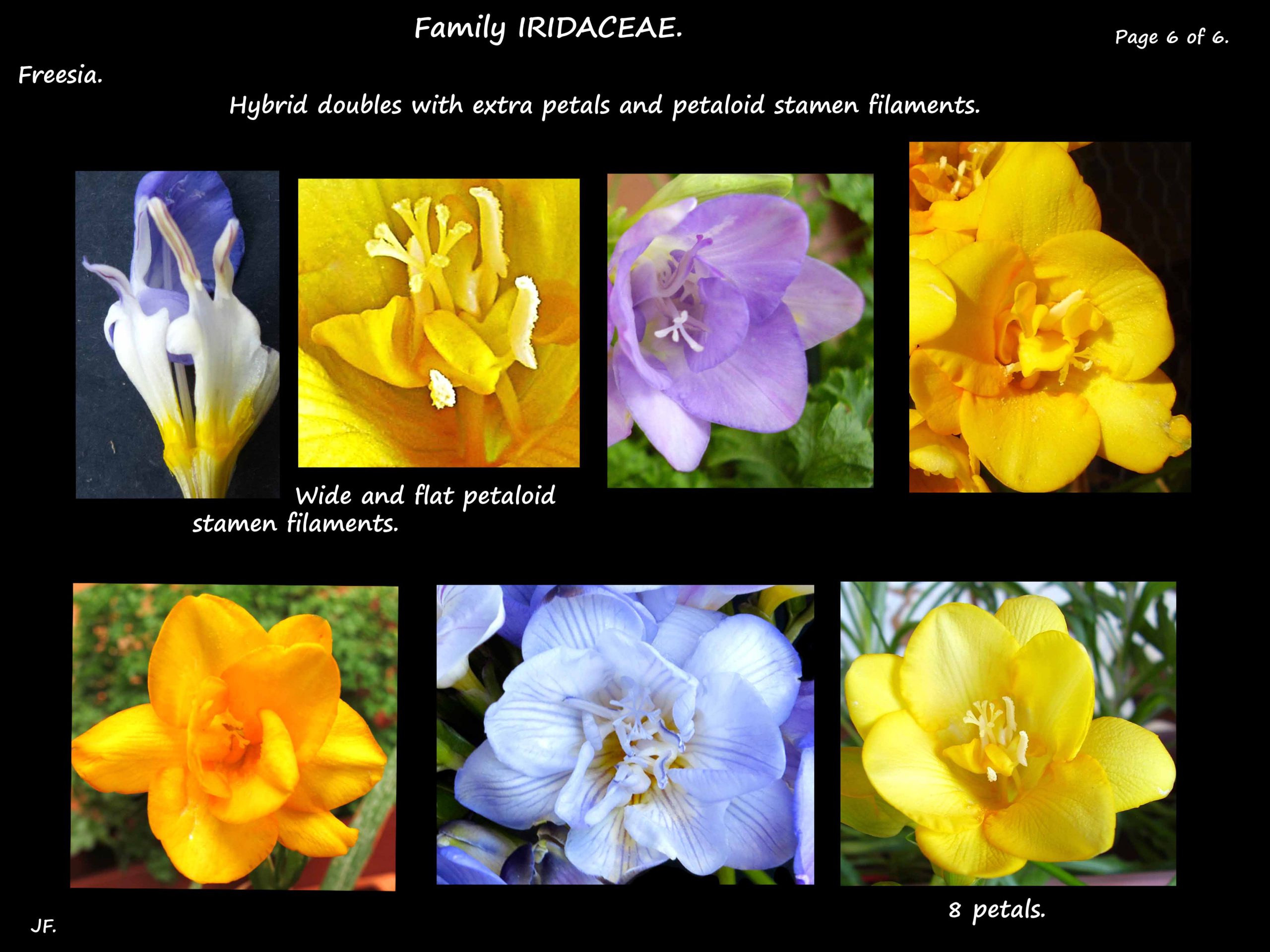Freesia.
Family Iridaceae > Subfamily Crocoideae > Tribe Freesieae (also includes Crocosmia).
There are about 16 (14 – 20) species and hundreds of hybrids.
They are seen in gardens but mostly as cut flowers.
Plants, up to 40 cm high and wide, grow from corms up to 2.5 cm wide.
There are up to 14 long and narrow leaves in 2 ranks.
Leaves, with a prominent midvein, are prostrate to almost erect.
Wiry, arching inflorescence stems may have a few branches.
There are bracts at the base of the branches and bracteoles under the flowers.
They can be green, almost transparent or brown and papery.
The up to 10 to 14 flowers are all on one side of the stem.
The stem bends so the flowers face upwards.
Freesias with a long, narrow fairly cylindrical perianth tube and abruptly flaring
lobes that lie in one plane are discussed under Freesia laxa (Anomatheca laxa).
The stamens extend beyond the perianth and flowers are mostly red or pink.
All the other freesias, including the hybrids, have different flowers.
They can be from 3 to 7 cm long.
The 6 fused tepal bases form a tubular perianth tube about 1/3 the length of the flower.
The distal 2/3 of the perianth is funnel-shaped and the lobes do not lie in one plane.
Some are almost 2-lipped with a larger dorsal tepal lobe and the rest curved back.
Most are white, yellow, pink or red with yellow on some or all of the lower lobes.
The outer surface can have purple tones.
The stamens usually do not extend beyond the perianth.
The many hybrids and cultivars add orange, purple, blue and mauve.
There are also bicoloured flowers, doubles and giant forms.
Most flowers seen today are hybrids.
The 3 stamens lie together on one side – unilteral.
A characteristic is the deeply divided style.
The 3 branches, which each divides again, curve over the anthers.
The stigmas have tiny filiform processes.
The inferior ovary has 3 locules with a few ovules in each.
The fruit are loculicidal capsules that open from the top.
All, or the upper half, have warts or papillae.
The almost round seeds are reddish-brown or occasionally orange.
J.F.
